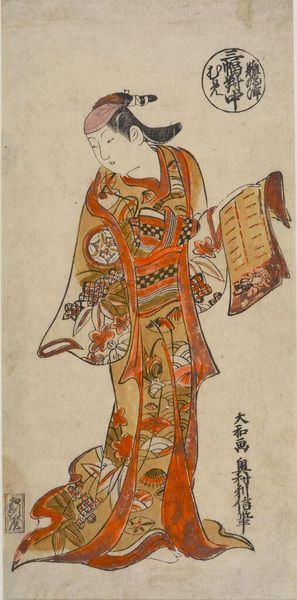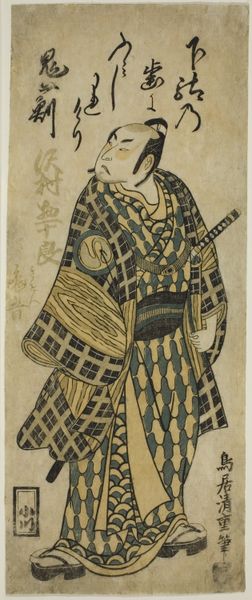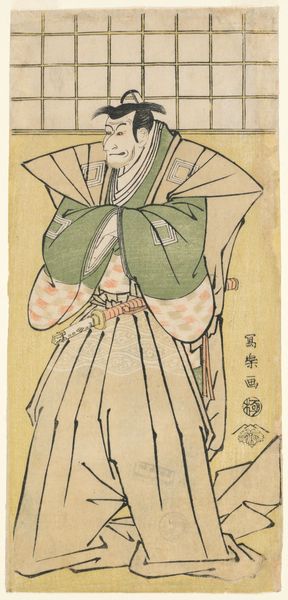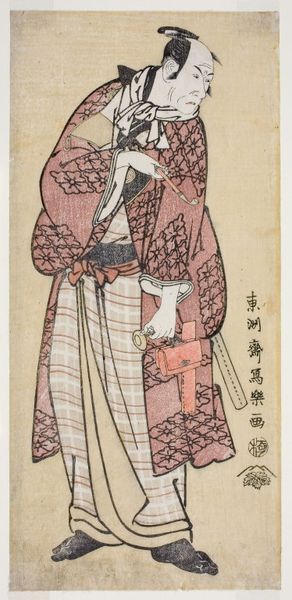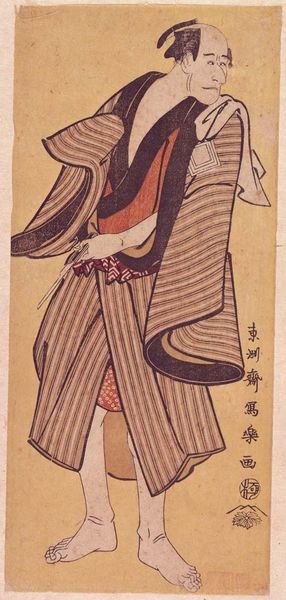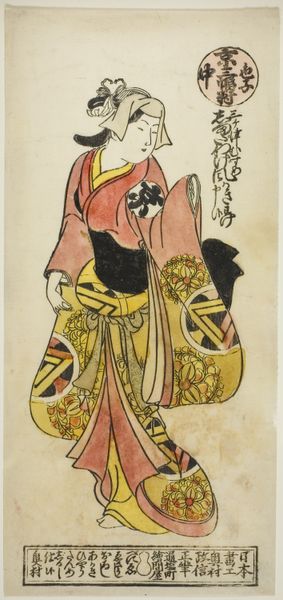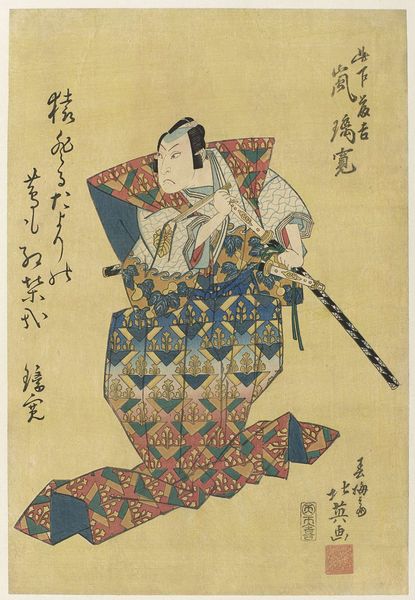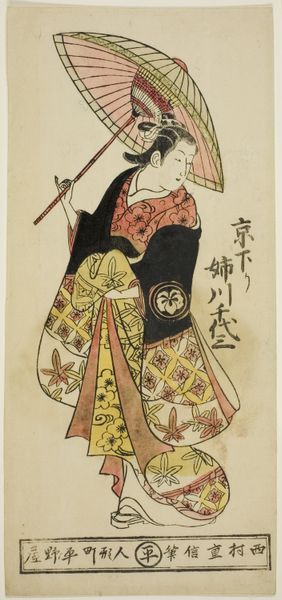
print, woodblock-print
#
portrait
# print
#
caricature
#
ukiyo-e
#
figuration
#
woodblock-print
#
orientalism
Copyright: Public domain
Editor: This striking woodblock print from 1794 by Tōshūsai Sharaku depicts Ōtani Hiroji III as Hata no Daizen Taketora. I’m immediately drawn to the expressive face and that vibrant checkered costume! What strikes you when you look at this image? Curator: Well, the figure almost vibrates with the symbolic weight of the Kabuki theater. Consider the stylized makeup and pose, they aren't just decoration. They are codes! Each gesture, each color, broadcasts information about the character, his role, his moral standing. Look at the tension in his hands. Editor: They're positioned so deliberately. One open, one almost clenched. Curator: Precisely. Notice, too, how the checkered pattern on his costume almost overwhelms the figure, yet that face... that individualized, almost confrontational face cuts through the graphic busyness. It is, in a way, a mask on top of a mask, or maybe, behind the mask, the truth? What emotions do you read in it? Editor: I see a kind of restrained anger, maybe suspicion. It feels very raw for a theatrical portrait. Curator: The ukiyo-e tradition often romanticized actors, presenting idealized versions. Sharaku disrupted that. He wasn’t afraid to show flaws, intensity. This portrait, in that sense, isn't just of a specific actor or character, but of the volatile energies simmering beneath the surface of Edo society. It feels like cultural memory imprinted onto the subject's visage, doesn't it? Editor: I never thought about how portraiture could hold that kind of collective meaning. Curator: Images carry weight, echoes. Recognizing that makes looking at art an active dialogue, not just passive observation. Editor: It's given me so much to consider. The masks we wear and what we try to show. Thank you for a rich deep dive.
Comments
No comments
Be the first to comment and join the conversation on the ultimate creative platform.
